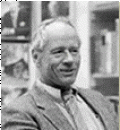Elizabeth Lady Stanton's sardonic and biting proto-feminist commentary on the Bible cost her the leadership of the suffragist movement.
Eighty years old and bedridden, her legs no longer capable of supporting her 240-pound bulk, Elizabeth Cady Stanton was scarcely disposed to attend the annual convention of the National American Woman Suffrage Association being held in Washington, D.C., in January of 1896.
Consigned to the Pennsylvania Railroad’s “Garbage Run,” they fought their own war on the home front, and they helped shape a victory as surely as their brothers and husbands did overseas.
All the new lady brakemen on the Pennsylvania Railroad were put to work on what was officially known as the Jersey Coast Extra List.
A wide range of historians, writers, and public figures reflect on “the most important, or interesting, or overlooked way in which America has changed"
A year ago, we were in the midst of a presidential campaign most memorable for charges by both sides that the opponent was not hard enough, tough enough, masculine enough. That he was, in fact, a sissy. Both sides also admitted that this sort of rhetoric was deplorable. But it’s been going on since the beginning of the republic.
Just before George Bush announced his running mate in 1988, a one-liner going the rounds was that he should choose Jeane Kirkpatrick to add some machismo to the ticket.
When American Heritage suggested last year that I put together the article that became “101 Things Every College Graduate Should Know about American History,” I accepted the assignment eagerly.
Elizabeth, Mary, and Sophia Peabody managed to extend the boundaries that cramped the lives of nineteenth-century women. Elizabeth introduced the kindergarten movement to America, Mary developed a new philosophy of mothering that we now take for granted, and Sophia was liberated from invalidism by her passionate love for her husband.
Other men,” Ralph Waldo Emerson told an admiring crowd in Boston’s Odeon Theater toward the end of 1845, “are lenses through which we read our own minds.” The eminent philosopher then went on to tell his audience of the importance in their lives of “Represent
When Elsie Parrish was fired, her fight for justice led to dramatic changes in the nation’s highest court.
When, on a spring day in 1935, Elsie Parrish walked into the office of an obscure lawyer in Wenatchee, Washington, to ask him to sue the town’s leading hotel for back pay, she had no idea she was linking her fate to that of exploited women in a Brooklyn laund
E.G. Lewis decided that a strong man could liberate American women and make money doing it
THE CELEBRATION began even before the opening gavel of the First American Woman’s League Convention. As the thousand arriving delegates made their way out Delmar Boulevard to University City, a new suburb of St.
For millions of women, consciousness raising didn’t start in the 1960s. It started when they helped win World War II.
DURING THE FIRST three years of World War II, five million women covered their hair, put on “slacks,” and at the government’s urging went to work in defense plants. They did every kind of job, but the largest single need was for riveters.
How the mistress of the plantation became a slave
“WE’RE USED to living around ‘em. You Northerners aren’t. You don’t know anything about ‘em.” This is or was the all-purpose utterance of white Southerners about blacks.
As three recent films show—one on the atomic bomb, one on women defense workers during the Second World War, one on the government arts projects of the thirties —this history of our times offers film makers arresting opportunities.
The sexual habits of American women, examined half a century before Kinsey
The nineteenth century was, according to the stereotype, ashamed and fearful of all things sexual. It was an era when, as one visitor to America swore, teachers put “modest little trousers with frills at the bottom” over the “limbs” of their pianos.
One of Ruth Snyder’s Crimes Was Murder
In 1925 a woman named Ruth Snyder too up with a salesman—a corset and brassiere salesman to be exact—and together on March 20, 1927, they murdered her husband in his bed. Months later, they were both electrocuted.
How a Crash Program Developed an Efficient Oral Contraceptive in Less Than a Decade
A good beginning for this story is a meeting in early 1951 of three remarkable people—the greatest feminist of our age, a great philanthropist who was as notably eccentric as she was fantastically wealthy, and a biological scientist whose subsequent world fam
“Viewed purely in the abstract, I think there can be no question that women should have equal rights with men …I would have the word ‘obey’ used no more by the wife than by the husband.”
”I first saw her on October 18, 1878, and loved her as soon as I saw her sweet, fair young face.
The prevailing Colonial feeling toward female education was unanimously negative. Learning to read was the first feminist triumph.
Could I have died a martyr in the cause, and thus ensured its success, I could have blessed the faggot and hugged the stake.” The cause was state support for female education, the would-be Saint Joan was Emma Willard, and the rhetorical standards of the 1820’





